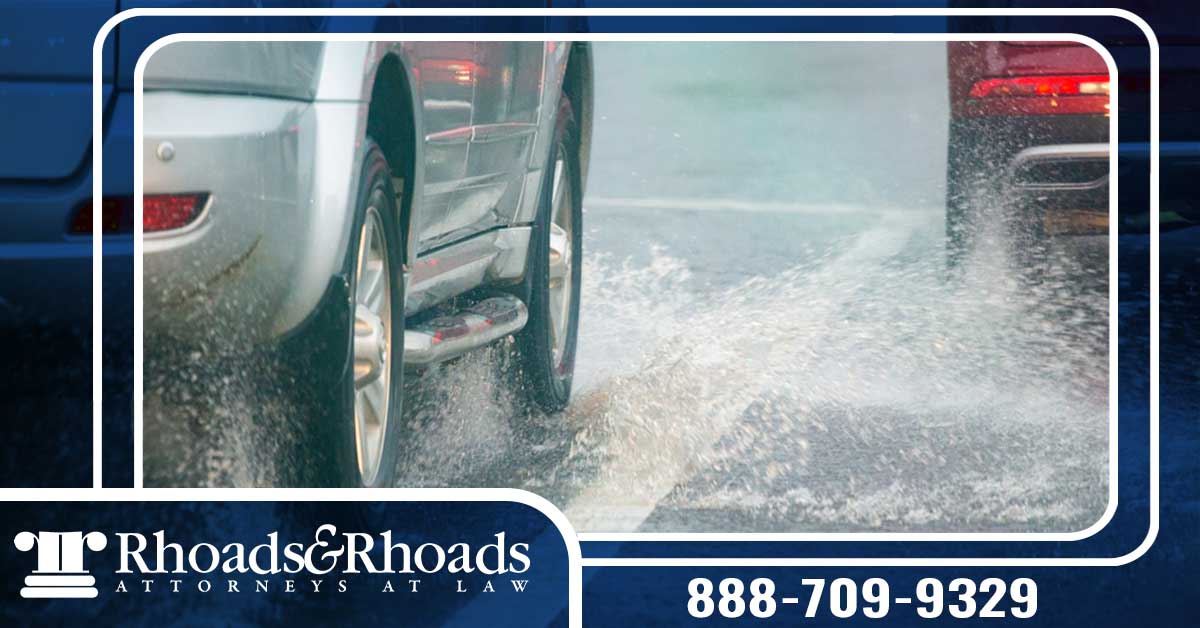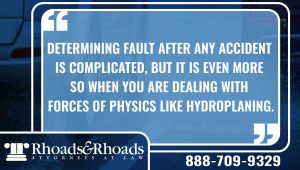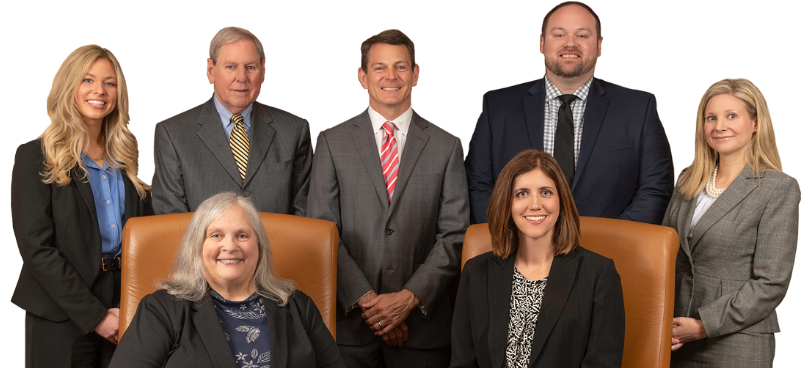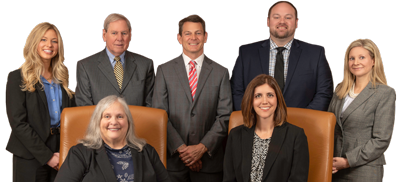
Key points of this article:
- Hydroplaning accidents can occur suddenly when a vehicle’s tires lose contact with the wet road surface, leading to a loss of control and serious crashes.
- Determining fault is complicated with hydroplaning but driver negligence for speeding, distraction, or disregard of conditions is often the primary cause.
- If you were partially at fault, comparative negligence rules in Kentucky mean your compensation can be reduced based on your percentage of fault, which a strong attorney case can minimize.
If you have recently been through a hydroplaning accident, you know how scary it can be.
Hydroplaning can happen in an instant, especially when road conditions are wet. Hydroplaning occurs when a vehicle’s tires lose contact with the road surface and ride on a thin film of water between the tire and the road. This loss of traction and control leads to spinouts, collisions, and serious injuries.
Whenever a hydroplaning incident occurs, injured parties and their insurance companies have plenty of questions about who was at fault – and whether negligence played a role.
Determining fault after any accident is complicated, but it is even more so when you are dealing with forces of physics like hydroplaning. Similar to sliding on ice, determining fault is often challenging. An insurance company may try to deny your claim, especially if they argue that the hydroplaning event was a “no-fault” accident.
The compassionate and knowledgeable car accident attorneys at Rhoads & Rhoads have plenty of experience dealing with all kinds of accidents, including those in which one or more vehicles hydroplaned. Let’s break down everything you need to know about fault, liability, and compensation after a hydroplaning crash.

What Causes Hydroplaning?
Several factors contribute to hydroplaning, in addition to rainy weather. These factors include:
- Driving too fast for the road conditions
- Failing to pay attention to water on the road
- Worn or faulty tires
- Standing water on roads that is difficult to see
- Taking quick turns while hydroplaning
Is Hydroplaning an At-Fault Accident?
 Although hydroplaning can occur without the driver behaving negligently, driver negligence is often the primary cause of a hydroplaning crash.
Although hydroplaning can occur without the driver behaving negligently, driver negligence is often the primary cause of a hydroplaning crash.
In Kentucky, drivers are legally required to drive appropriately for the conditions. If road conditions are affected by weather, such as rain, snow, freezing temperatures, or wind, the driver has a duty of care to adjust their driving accordingly.
A driver who is speeding, distracted, or willingly disregarding road conditions may be liable for an accident that occurs when their car hydroplanes and strikes another vehicle or pedestrian.
Other Potential At-Fault Parties
In addition to the driver bearing responsibility, other parties may also be responsible.
Some examples of additional responsible entities include:
- A city or state that fails to maintain the roads appropriately or place appropriate signage when there is a known risk
- A tire shop or maintenance shop that didn’t inform a driver of faulty tires
- A manufacturer who released defective tires to the public
How to Build a Case for Compensation After a Hydroplaning Accident
Here are some tips for building your case for compensation after a hydroplane car accident.
- Retain a car accident attorney to help you fully investigate the root cause of your accident
- Collect and save as much evidence as possible (including police reports, photo and video evidence, medical records and bills, eyewitness testimonies, surveillance footage, etc)
- Consider that multiple parties may be responsible – not just one!
- Anticipate common insurance company pushbacks, such as trying to blame the weather and therefore the accident as an “act of God”
- Expect your attorney to hire expert witnesses who can support your argument for who was at fault
What if you were partially at fault?
Great question. If you were also partially at fault for the accident, Kentucky will apply what is called comparative negligence.
The comparative negligence statutes in Kentucky mean that you can be held responsible based on the percentage of your liability. If you were 30% responsible for the accident, your total compensation award or settlement amount will be reduced by 30%.
Your attorney can make a strong case about who was ultimately responsible, and keep that percentage as low as possible based on the evidence in the case.
Do you need hydroplane accident insurance?
You do not need a special clause in your insurance coverage that covers hydroplaning. Unlike other forms of insurance that you can add to your main package, such as uninsured and underinsured drivers’ coverage, hydroplaning is covered under other parts of your policy.
If another driver’s negligence caused the accident, that party’s insurance company should pay out your damages.
Rhoads & Rhoads – Helping Kentucky’s Accident Victims
Hydroplaning is a complicated scenario with many potential interpretations for who was at fault, if anyone.
When you are dealing with the aftermath of a serious car accident, an accomplished and knowledgeable attorney on your side can make all the difference. At Rhoads & Rhoads, our car accident attorneys are here to help you protect your rights and seek maximum compensation for your losses.
We are proud to have a proven track record of success. Our legal team will:
- Conduct an investigation
- Identify negligent parties
- Anticipate and respond to the insurance company’s pushback strategies
- Build a compelling argument
- Negotiate with the insurance company
- Take your case to court if necessary
With compassionate guidance through the legal process, we can focus on your legal case while you recover from your injuries! If you or a loved one has been injured in a car accident involving hydroplaning, we’re here to help. Contact our office today at 888-709-9329 for a free consultation to discuss your case. Our team is ready to answer your questions and outline your options at no cost or further obligation to you.


